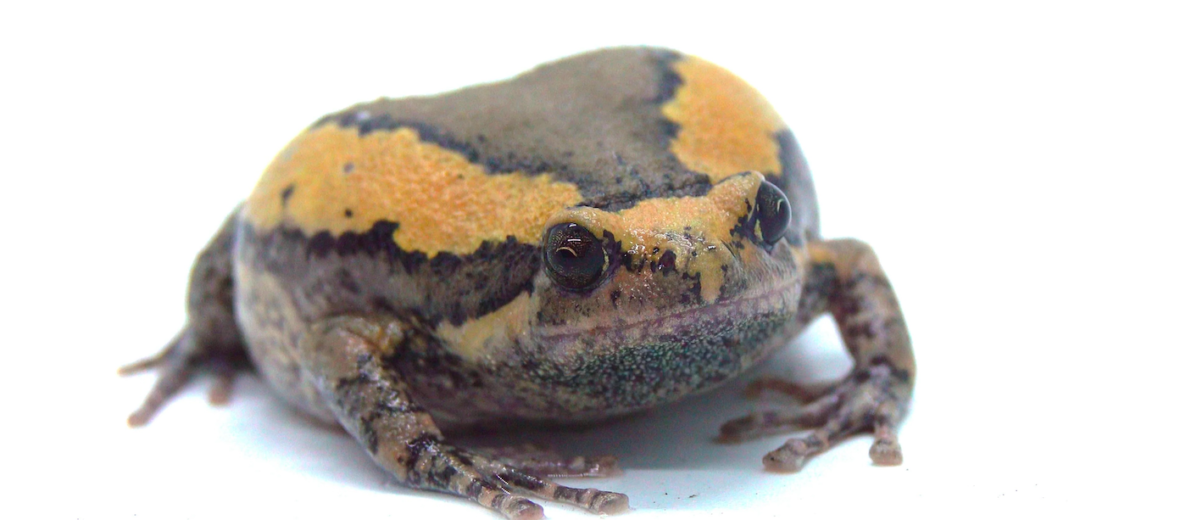
The banded bullfrog, aka rice frog, Asian painted frog, bubble frog, or chubby frog, is native to mainland southeast Asia. They prefer a forested environment but will also show up in homes. Due to their invasive habits and abundant population they are listed as Least Concern by the IUCN.
First the Stats…
Scientific name: Kaloula pulchra
Length: Up to 3 inches
Lifespan: Up to 10 years
Now on to the Facts!
1.) These frogs are voracious predators that eat worms, crickets, grasshoppers, and a variety of other insects.
2.) Their favorite prey items though are ants and termites.
3.) These chubby little frogs are considered an invasive species in Guam, Singapore, the Philippines, Borneo, Sulawesi, Australia, and New Zealand.
4.) Males and females come out in bulk on the first heavy rainfall of the season to breed.
5.) This species of frog is commonly sold in pet stores around the world.
But wait, there’s more on the banded bullfrog!
6.) As a defense, they will secrete a sticky mucus coating that tastes nasty to predators.
7.) Like other frogs, females are larger than males. This is to precipitate an easier mating experience. Since males grasp the females (amplexus) and hold on till she lays her eggs. The eggs are then fertilized by the male.
Did you know…?
1 reason they are considered invasive is that their tadpoles mature incredibly quickly; in as little as 2 weeks! This allows them to quickly over-populate and consume available food sources.
8.) Females lay hundreds of eggs in a mass called frog spawn, on the surface of the water.
9.) When temperatures drop, they go into a state of brumation. They don’t hibernate or aestivate like some other species of frogs.
10.) Their call is a repetitive and loud groaning honk that can be heard from quite a ways away.
Now a Short Banded Bullfrog Video!
Also, check out the Critter Science YouTube channel. Videos added frequently!
Want to suggest a critter for me to write about? Let me know here.



